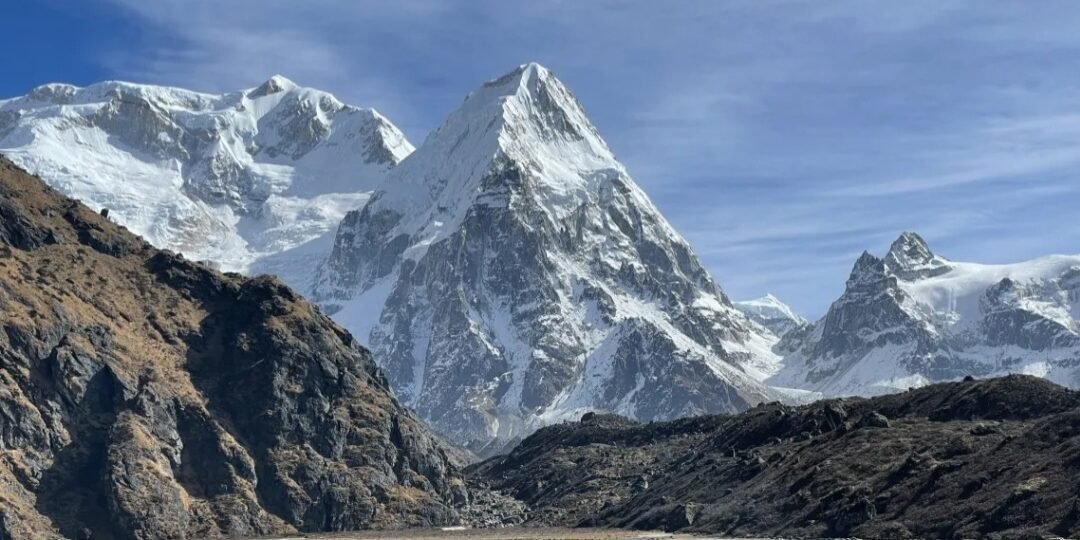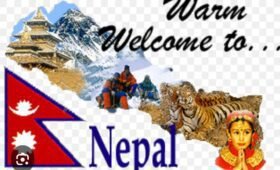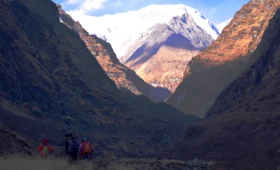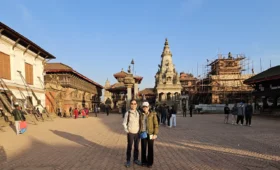The Kanchenjunga trek is a remote and adventurous trekking destination in Nepal, offering the opportunity to explore the base camp of the world’s third highest mountain. This trek takes you through lush valleys within the Kanchenjunga conservation area project (KCAP). Mount Kanchenjunga, standing at an impressive height of 8,586 meters, is the second highest mountain in Nepal and the third highest in the world. The Kanchenjunga circuit trek allows you to experience both Kanchenjunga base camps by crossing the Sele Le pass. Known for its length and less frequented trails, the Kanchenjunga base camp trek is a remarkable journey in the Himalayas of Nepal. It is important to note that this region has restricted trekking trails, which were opened for trekkers in 1988. To embark on this adventure, trekkers must obtain three different permits: the special Kanchenjunga trek permit, the Kanchenjunga conservation area project permit (KCAP permit), and the Trekkers Information Management System (TIMS) permit.
The cost of a Kanchenjunga trekking permit is USD 70 for the first 7 days, with an additional USD 10 for each extended day. These permits are issued through local government registered Nepal trekking companies, in accordance with the rules and regulations of the Department of Immigration. It is important to note that a minimum of two people is required to obtain a special permit, meaning that individual trekkers are not allowed to trek to the Kanchenjunga region. Furthermore, a minimum of three weeks of holidays is necessary for the Kanchenjunga package trekking. The best months for trekking in the Kanchenjunga region are autumn (September, October, November) and spring (March, April, May), although it is possible to trek in this region throughout the year, depending on the trekkers’ preferences and availability of holidays. It is worth mentioning that the Kanchenjunga trek is considered to be of a strenuous difficulty level, and therefore, good physical fitness is essential in order to successfully reach the destination.
The major trekking routes in the Kanchenjunga trek destination include the Kanchenjunga base camp trekking, Kanchenjunga circuit trekking, and Mike danda trekking. The itinerary for the Kanchenjunga trek can be customized according to the preferences and holiday schedule of the trekkers. To ensure a successful trip, it is essential to have a professional Nepal trekking guide, especially due to the challenging Sele le pass at an altitude of 4854 m, Kanchenjunga Pangpema base camp at 5140 m, and Oktang base camp at 4750 m. Before embarking on the trek, it is important for trekkers to gather information about the Kanchenjunga trek in order to overcome any obstacles along the way. The cost of the Kanchenjunga trek depends on the size of the group and the chosen destination. Compared to popular trekking destinations like Everest base camp trek, Annapurna circuit trek, and Langtang Helambu trek, the price for the Kanchenjunga trek is slightly higher due to the longer journeys and the need for flights from Kathmandu to Biratnagar or Seuketar, although travelers also have the option to join an overland trip to Taplejung from Kathmandu.
A basic Information about Kanchenjunga Trekking
The trek to the Kanchenjunga region
Kanchenjunga trekking offers breathtaking views of two of the highest mountains in the world, Mt. Everest (8848m) and Mt. Lhotse (8516m), as well as Mt. Kanchenjunga (8586m). This restricted trekking trail in Nepal provides the best mountain vistas. Compared to popular trekking destinations like Everest, Annapurna, and Langtang, the Kanchenjunga circuit trek is less crowded and attracts fewer tourists. It is a hidden gem among trekking destinations in Nepal. One of the advantages of trekking in the Kanchenjunga region is that it can be done without the need for a domestic flight within Nepal. This makes it a convenient option for trekkers throughout the year. Embark on an adventure to explore the lesser-known trekking destination of Nepal and experience the beauty of the Kanchenjunga conservation area project (KCAP). This conservation area offers a unique and less trodden path for hikers to discover.
Itinerary for the Kanchenjunga trek.
The itineraries for Kanchenjunga trekking are typically designed based on the preferences of trekkers, but a minimum of three weeks is usually required to complete the Kanchenjunga base camp trek. However, it is now possible to complete the trek in just 18 days.
Trekking Permit for the Kanchenjunga trek.
For trekking in the Kanchenjunga region of Nepal, there are three different permits that must be obtained: the special Kanchenjunga trek permit, the Kanchenjunga conservation area project permit (KCAP permit), and the Trekkers information management system (TIMS permit). The special Kanchenjunga trek permit is issued by local Nepal trekking agencies in accordance with the rules and regulations of the Department of Immigration Nepal. To obtain this permit, three color passport size photos are required. The cost of the special Kanchenjunga trek permit is USD 70 per person for the first week, with an additional USD 10 per day for each extended day.
The level of difficulty of Kanchenjunga trek.
Trekking to the Kanchenjunga region is classified as strenuous, necessitating excellent physical fitness. However, prior trekking experience is not a prerequisite. The trek commences gradually from an elevation of 1555m and ascends up to 5154m, underscoring the significance of maintaining good physical fitness in order to successfully reach the destination.
The Kanchenjunga trek package includes provisions for lodging and sustenance.
Throughout the trekking tour, trekkers will have access to standard accommodations in the Kanchenjunga region. These accommodations consist of tea houses and lodges, which offer both common and private/attached toilet facilities. However, due to limited availability, trekkers may occasionally need to stay in shared dormitory rooms. During their journey, trekkers will have the opportunity to enjoy a variety of meals from the local menu, including Nepalese, Indian, Chinese, Tibetan, European, and American cuisine.
The best time for trekking in the Kanchenjunga region is during its peak season.
Trekking to Kanchenjunga is most favorable during the months of September, October, November, December, March, April, May, June, July, and August. However, it is feasible to undertake this trek throughout the year, depending on the preferences and availability of holidays for trekkers. It is worth noting that January and February may pose some challenges for Kanchenjunga treks due to the presence of the demanding Sele Le pass and both Kanchenjunga base camps.
Kanchejunga Trekking Packing List
- Rucksack or duffle bag will be carried by a porter if hired.
- A day bag with a capacity of 30L is recommended.
- A backpack with a capacity of 40L-70L is suitable for longer treks.
- It is advisable to wear light and quick-drying T-shirts and trekking pants during the day.
- Warm clothes, including base, mid, and insulating layers for the head, hands, upper body, and lower body, are necessary for higher altitudes.
- A down jacket can be worn in the evening and night at higher altitudes.
- Strong hiking boots are essential, and flip flops can be carried for comfort.
- A headlamp is useful in case of a power outage.
- Toiletries and personal hygiene products should be included.
- Sunglasses and a sun hat or cap are recommended for sun protection.
- Medication and a first aid kit are important for emergencies.
- It is advisable to carry a smartphone and personal gadgets.
Lastly, a sturdy trekking pole or stick is recommended for added stability.
Plan your trip with authorized and registered local trekking agencies in Nepal.
Treks in the Kanchenjunga region are regulated and require trekkers to engage with Nepal companies. It is advisable for all trekkers to select a professional Nepal trekking agency to ensure a smooth journey to the destination. When searching for Nepal trekking agencies nearby, numerous companies will be displayed, including individual trekking guides, freelance guides, and illegal Nepal trekking operators. It is wise to opt for government registered Nepal travel companies and consider choosing a trustworthy Nepal trekking company for a secure and memorable trip.



